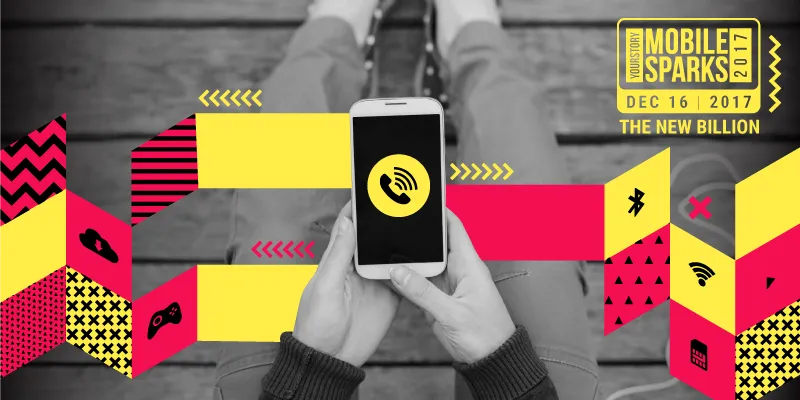What do Indians use their mobile phones for?
If you know what a pager, palm pilot or floppy disk looks like, or have actually used any of these, you are probably of a certain vintage. Ahem. It also means that you remember a time when people had to lug around a minimum of four to five devices to get them through the day: a bulky computer to check emails, an MP3 player to stock up on music, and a mobile phone to make and answers calls and text on the go.
Cut to today, and our world has shrunk into the palm of our hands, with everything we could possibly need neatly contained in a single five -inch screen. Our smartphones are like the sliced bread of our times, our new go-to for everything, and everything is just a tap, a swipe or a voice command away. You name it, and there’s an app for it. From shopping for groceries, to catching up on the latest shows, from unlocking your car to switching off the television, our phones do almost everything, except help you load your washing machine. And who knows, with the advances in technology, that day may not be far.
In an increasingly digital world, being tech-savvy is not a prerequisite for consumers to use their smartphones for a variety of reasons other than plain and simple communication. Here are six ways in which technology has kept pace with the evolving needs of smartphone users over the years:
Social media
A space that barely existed a decade ago, social media is now almost a lifeline of sorts for people. Statista estimates that by 2020, a third of the global population – 2.95 billion people – will use some form of social media. Other than being a platform where people can show the world pictures of themselves, their cat, their lunch or their vacation, or turn philosophers in 280 characters or less, social media is powerful enough to influence world-defining events such as elections and mobilise help during crises. And smartphones make it that much simpler and quicker to share news, updates and appeals on the go.
Education
More parents now approve of their children spending more time staring at the phone screens. Especially if the screen happens to contain content from the several edtech apps which help students learn and understand concepts like never before. Gone are the days of swotting mindlessly from textbooks, and panicking a day before the exam when you can’t remember anything. The young and tech-savvy school students of today prefer a more engaging and interactive approach. And the edtech startups are delivering. According to research by Google and KPMG, the online edtech market in India is projected to reach billion by 2021, and the paid user base will grow to $9.6 million from 1.6 million in 2016.

Food delivery
While your phone may not be able to cook you your favourite biryani, it can definitely help you order some from that place way across town which everyone is raving about. Food delivery apps, despite going through a roller-coaster ride over the last couple of years, are definitely taking a large slice of the pie when it comes to the restaurant business. While the online food delivery segment grew by 150 percent in 2016, according to a report by RedSeer, global players like Uber and Google h`ave entered the food delivery fray in India, making the sector all the more competitive.
Cashless payments
The coolness factor aside, convenience is a key advantage of cashless payments using smartphones. With e-wallets and other mobile payment apps ensuring that ample security measures are in place, transactions have never been easier, both for merchants as well as customers. According to research by BI Intelligence, mobile wallets will see a compounded annual growth rate of 80 percent over 2015-2020.
Health monitoring and fitness
From measuring blood pressure and blood sugar to reading body temperature and blood oxygen saturation, smartphones can now help people monitor their health themselves. Some services also allow for remote monitoring, where the reports generated using the smartphone as the base can be sent to qualified medical personnel who can then take relevant decisions regarding the user’s health. This is especially useful in the case of elderly patients who live on their own, or people living in remote areas with limited access to medical facilities.
Shopping
The festival season never really seems to go away with online shopping. There are sales and discounts on almost every day, prompting droves of people to look for discounts online all the time. In recent years, the number of people shopping online has gone up exponentially. According to a report by ASSOCHAM, the number of online retail customers in India will cross 100 million by the end of this year. Of this, nearly half are customers who use their phones to shop online. Globally, m-commerce revenues are projected to reach a whopping $669 billion in 2018, according to Statista.
You can know more about these and other exciting trends shaping the mobile landscape in India, at MobileSparks, India’s premier conference for all things mobile.
Don’t miss your chance to buy early-bird tickets and book your spot today. Use the code MS17EB to book your tickets at 1999 INR.
If you wish to exhibit at MobileSparks, contact us here. To be a sponsor, reach out to [email protected].
If you would like to showcase your product at MobileSparks, apply now to be a MobileSparks Startup here.







